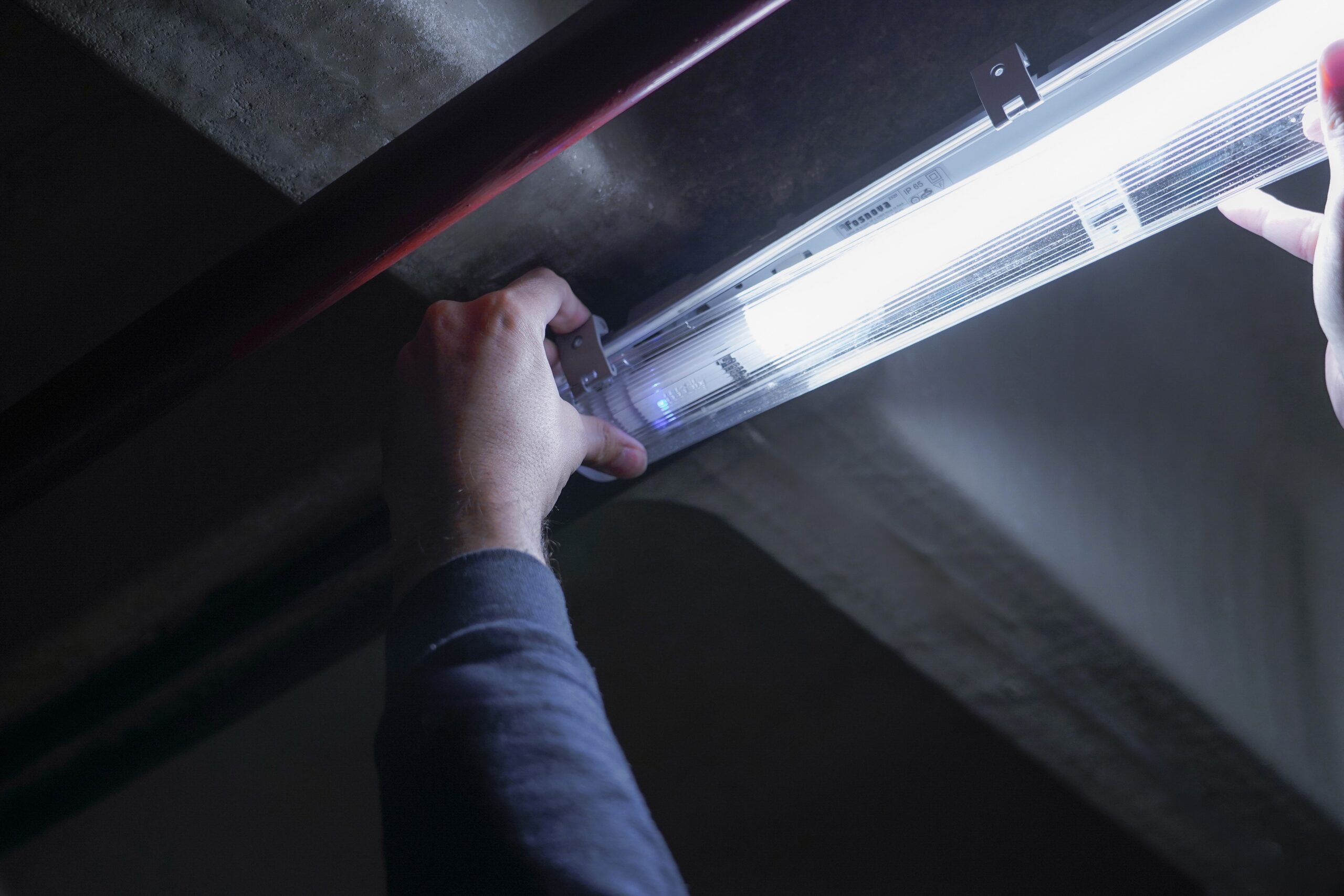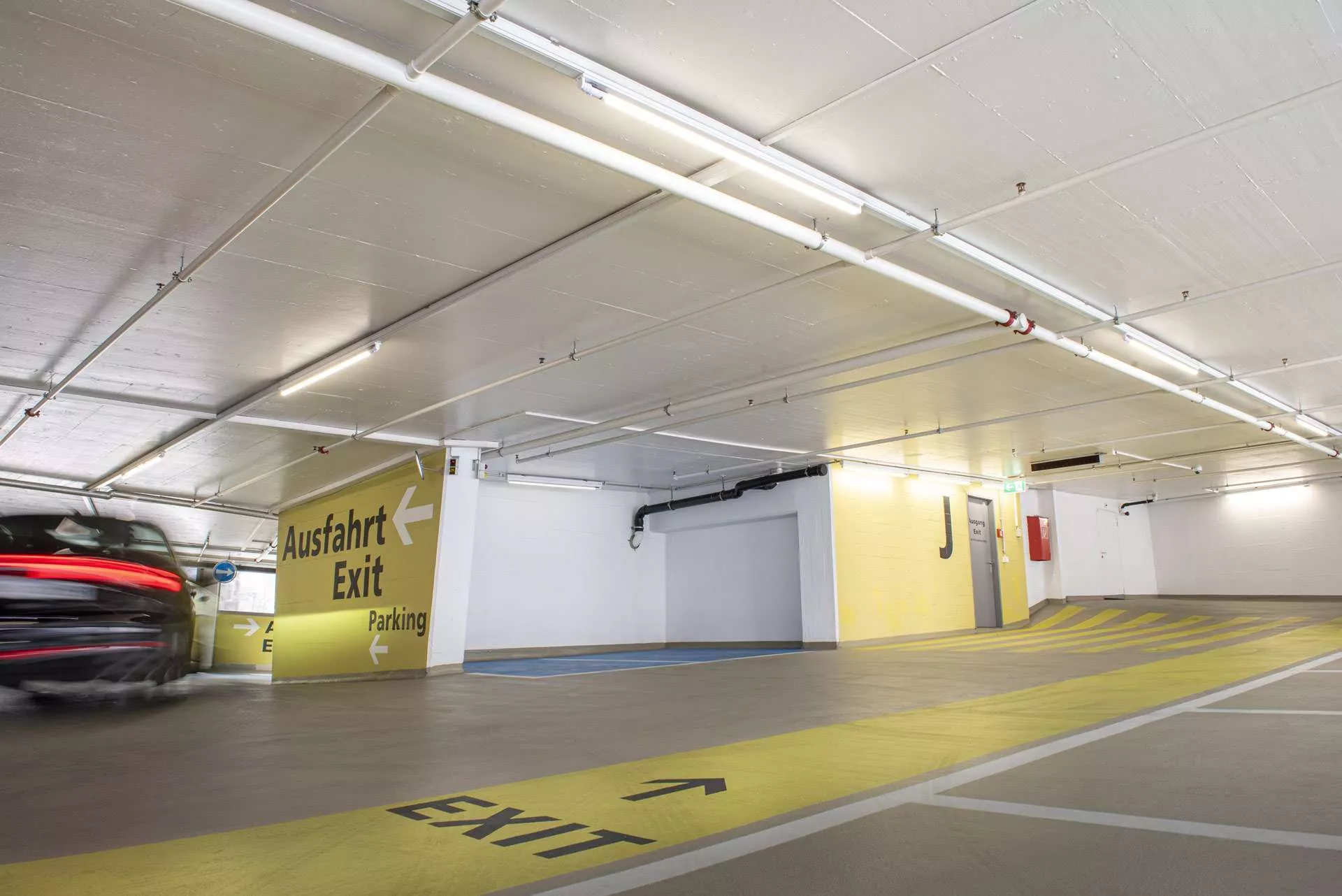
Blog Posts - 04.07.2025

“Please turn off the tap when you brush your teeth” or “Please switch off the light when you leave the room”. Who hasn’t heard these phrases? Even as children, we were taught to use limited resources sparingly. And even if this advice is well-intentioned, it is nowhere near enough to overcome the current challenges in relation to climate change. Despite climate agreements and government support programmes, the global hunger for energy continues to rise. What can we in the lighting sector constructively contribute to mastering the energy transition and leaving an intact planet for future generations?
The term “energy efficiency” plays an important role in this discussion. Generally speaking, it describes the relationship between the benefit and the energy input – for example in the provision of light. The following always applies: the less energy is required for the desired output, the more energy-efficient a service or product is.
In times of energy transition, energy efficiency is a key pillar that, together with the reduction of absolute energy requirements, contributes to environmental protection. The background to this is that the utilisation and conversion of energy always produces pollutants that pollute the climate, air, water and soil. For this reason, numerous countries around the world have developed energy concepts in recent years that aim, among other things, to significantly reduce electricity consumption.
High energy consumption is a burden on the environment and is increasingly unbalancing the climate. It has long been proven that the burning of fossil fuels accelerates climate change. Energy consumption should actually be reduced, but the opposite has recently been the case. However, high energy consumption is not only harmful to our environment: we also feel it directly in our wallets. So if we make the transition to more energy-efficient appliances and technologies, it will ultimately benefit everyone: we will reduce our harmful impact on the environment and at the same time benefit from lower outgoings for our energy consumption.
The question of all questions is: How much energy can each person consume so that we do not destroy the earth? And: How can the demand for energy be reduced and what political and legal measures are sensible to ensure sustainable development? In Switzerland, a highly interesting energy policy model was developed at the beginning of the 1990s: the 2000-watt society.
This model, developed by ETH Zurich, dealt with the question of how much energy each person can consume on average so that global warming can be curbed and our scarce resources can be used responsibly. The scientists calculated a clear figure: 2000 watts – the average amount of power that every person in the world can consume per year to ensure that the climate does not warm up by more than 2° C.
The last time a 2000 watt society existed in Switzerland was in 1960. Since then, energy consumption has risen rapidly. In Germany, Austria and Switzerland, we are currently living in a “6500 watt society”. This means that we are consuming more than three times what the climate can tolerate in the long term – three times what we are actually entitled to. This development has gone hand in hand with the desire for a higher lifestyle, ever greater consumption of trendy products, exotic foods, larger homes and longer journeys to work. Fortunately, total energy consumption is slowly falling again, but we are still a long way from the ideal level.
The good news, however, is that a 2000-watt society is realisable even in today’s world. Researchers at ETH recently discovered that people in industrialised countries can also reduce their energy consumption by two thirds without having to accept any major loss of comfort – if they want to.
In Switzerland, there is the “2000-Watt-Areas” label and there are already 39 certified projects. A 2000-watt site fulfils the target values of the 2000-watt society. However, how exactly these targets are achieved is defined relatively freely and therefore offers room for manoeuvre – for residents as well as for planners and financiers. In the Zurich region, the 2000-watt society is to become a reality by 2050. To achieve such an ambitious goal, however, there needs to be a good interplay between reducing energy consumption and increasing energy efficiency with new technologies. Innovations in this area play a decisive role. When it comes to lighting, modern sensor technology is an important cornerstone.
When it comes to energy-efficient technologies, the lighting sector plays a major role. We consume around 8.3 billion kWh per year for artificial lighting in residential buildings, industrial, commercial and service buildings as well as on streets and squares. Energy consumption in offices and commercial buildings is also extremely high. What’s more, a full 40 per cent of the electricity costs incurred in this area are caused by lighting. Consequently, there is huge potential for modern and energy-efficient solutions right here.
A large proportion of the energy consumed can already be saved thanks to the further technical development of conventional fluorescent tubes into modern LED tubes. Intelligent lighting systems that control the light as required are even more energy-efficient. Sensor-controlled lighting systems, for example, offer an innovative approach to energy-efficient lighting. With the help of this technology, the Zurich start-up LEDCity wants to make its contribution to the realisation of the 2000-watt society. The declared aim is to have saved the electricity production of an entire nuclear power plant by using LEDCity’s products ten years after its foundation (i.e. in 2027). What does that mean in concrete terms?
In order to reduce energy consumption, it is possible to manufacture a product that is as energy-efficient as possible, but there is also a second dimension with enormous potential when talking about lighting: if you look at the formula for calculating energy consumption, you can see that not only the power (P) but also the time factor has a decisive influence on the total energy consumption: E = P ∗ t.
What does this mean for energy consumption? LED light sources have been becoming increasingly popular for many years, as they are much more economical in terms of energy consumption than conventional fluorescent tubes. However, there are limits to this development in light source efficiency. With today’s technology, electrical consumption can no longer be significantly reduced. Where there is still considerable potential, however, and which has been given little consideration in previous developments, is the operating time (t).
Today’s “smart lighting” products increasingly rely on LEDs with classic motion detectors to reduce energy consumption and are primarily called “smart” because they often work wirelessly. In practice, however, motion detectors often do not really make sense in commercial buildings these days, as the lamps are lit at full intensity from the first movement detected until the last person leaves the building in the evening. In addition, individual motion detectors usually control large groups of lamps and thus illuminate large areas that do not actually need to be lit at all. As a rule, the light is not needed all the time – and usually not at full power. LEDCity lamps, for example, combine the technical possibilities of LEDs with various sensors and smart algorithms. This means that both the time factor and the available daylight can be taken into account. Because the light sources themselves recognise when, where and how much light is needed, energy consumption can be minimised in an impressive way. Savings in the range of 80 % to 90 % – and often even more – can be expected with most systems of this type.
However, environmental protection in the lighting sector is not just about saving energy. A sustainable solution should be chosen as early as the production of the tubes: LEDCity’s light sources are made of aluminium, which is not only a good material but also recyclable and therefore much more environmentally friendly than many alternatives. A high-quality LED tube can therefore shine for up to 100,000 hours. So if you opt for quality, such a solution provides you with a flawless system that requires hardly any maintenance and functions reliably for years. Even if the current trend is towards complete LED luminaires, the Zurich-based company relies on a modular system with a manufacturer-independent standard that guarantees easy replacement of individual components. This means that the eco-balance can be significantly improved once again.
It is crucial that more use is made of such energy-efficient and environmentally friendly systems in future: In Switzerland, around 12 per cent of total electricity consumption is currently used for lighting alone. This must – and can very easily – be reduced. The solution described here is a very good example of today’s technical possibilities. LEDCity is committed to making its contribution to reducing energy consumption for lighting by 80 per cent by 2027 – compared to the annual consumption in the year the company was founded. It is an ambitious goal, but one that is also of great importance if we are to realise the goal of a 2000-watt society by 2050.
May we support you?
Do you have a conversion project that you would like us to support you with? We would be happy to discuss the possible options with you personally and introduce you to our product range so that together we can make a contribution to achieving the 2000-watt society in the near future. We look forward to hearing from you and will be happy to provide you with a non-binding quotation.
Want to find out more about us?
Get in touch with us!
If you have any questions, please contact [email protected]